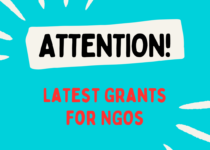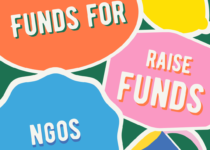Apply for USAID Funds for Better Education in Malawi Project: Complete Information on Eligibility Criteria and How to Apply
Introduction: Apply for USAID Funds for Better Education in Malawi Project, The United States Agency for International Development (USAID) is inviting applications for a cooperative agreement to spearhead the Tisamale Mabuku (Let us take care of books) Project. This initiative stands in harmony with the fundamental principles and objectives of the Government of Malawi (GoM), reflecting the Vision: Malawi 2063 and its 2021-2030 Malawi 2063 first 10-Year Implementation Plan (MIP-1). The project is strategically designed to align with the GoM’s core policies and priorities.
Last Date of Application: 27th November 20203
At its core, the Tisamale Mabuku Project is dedicated to enhancing the educational landscape of Malawi. By ensuring that every school is equipped with essential resources such as textbooks, teachers’ guides, lab equipment, and desks, the project aims to provide a conducive learning environment for the nation’s youth. This endeavor directly contributes to the GoM’s ambitious goal of empowering future generations with knowledge and skills.
Furthermore, the project is deeply rooted in fostering civic engagement and active participation among citizens. By encouraging and facilitating involvement in governance and national development activities, Tisamale Mabuku promotes a sense of ownership and pride within the community. This inclusive approach signifies a step towards a more democratic and accountable society.
Transparency and openness are the cornerstones of the Tisamale Mabuku Project. By advocating for access to public information and promoting accountability between the government and its citizens, the initiative strives to create a transparent environment. This openness not only builds trust but also ensures that the nation’s resources are utilized efficiently, leading to sustainable growth and development.
In summary, the Tisamale Mabuku Project, under the auspices of USAID, embodies the collaborative efforts between the United States and Malawi. By focusing on education, citizen engagement, and transparency, the project aspires to pave the way for a brighter, more informed, and actively involved Malawian society, in alignment with the visionary goals outlined by the Government of Malawi.
- The NextGen project focuses on Standards 1 and 2, and is intended to “solidify and build on the contributions made to date as part of the implementation of Malawi’s National Reading Program (NRP) towards improving the delivery of high-quality early primary reading instruction in all Malawian primary schools”. Several aspects of the NextGen activity seek to increase the number of TLMs in schools, the community, and homes, and to increase community engagement in literacy instruction. The NextGen project will:
- Support implementation of the SCA book chain recommendations [and policy], which may include promotion of private book markets. These recommendations include book tracking and tracing, data collection systems, and use of technology in data collection
- Support the provision and use of Standard 1 and 2 teacher’s and learner’s books, with the aim that by the final two years of the project the Government will provide 50 percent of books needed to maintain a 1:1 ratio
- Involve citizens and civil society organizations in data collection and support SMCs to track data on learners’ and teachers’ use of textbooks
- Promote youth-led reading camps and other community engagement activities and mobilize communities to bring reading materials to reading camps and establish community reading activities
- Find innovative solutions to ensure there are adequate reading materials (which could include digital formats) in homes and communities
- Train 100 percent of SMCs and PTAs
USAID Funds for Better Education in Malawi Project Purpose
- All children in Malawian public primary schools have access to the NRP TLMs in their schools and communities that are necessary for their development of foundational literacy skills.
USAID Funds for Better Education in Malawi Project Funding Information
- USAID intends to provide $4,000,000 in total USAID funding over a two year period.
USAID Funds for Better Education in Malawi Project Expected Results
- This project will support the MoE’s NRP by improving the capacity of school communities to make sure that intended NRP TLMs are available in their school and community and are managed and used appropriately. While the project will not directly provide additional TLMs, it will safeguard investments already made in the NRP by the MoE, USAID, and others by enabling communities to fulfill their roles and identify their own issues and solutions to improve TLM management and utilization in their schools and communities. Communities and civil society will support, monitor, and advocate for effective TLM management, and will contribute to improving the production and use of data related to TLMs and to improving public awareness of TLM management and use.
Intermediate Result 1: Communities and civil society monitor, report on, provide support for, and advocate for effective management, replenishment, utilization, and accountability for TLMs in public primary schools and community.
- The community will be enabled to identify their own challenges and solutions, and to plan activities to support improved TLM management and utilization in their school and community. These solutions should build on existing community structures, stakeholders, and systems, such as those supported by NextGen and MERP. This includes strengthening the ability of school community management members, and members of any other official community structures linked to the school, to fulfill their intended responsibilities and should integrate monitoring, reporting, and advocacy, and provision of related support.
Expected Results:
- School community management members sustainably carry out their monitoring, reporting, advocacy, and support roles, aligned with official systems, procedures, and stakeholders, to improve TLM management, replenishment, utilization, and accountability, in their school and community.
- Improved community engagement and cooperation between education system stakeholders and the community to sustainably support intended TLM management and utilization. Inclusion and active participation of youth, women, and adults with disabilities is prioritized
Illustrative Activities:
- Identify and map existing community engagement and CSOs with relevant competencies, experience, and relationships based in the participating schools’ communities. Also identify MoE, CSO, USAID, or other development partner activities with potential for coordination and sharing of lessons learned
- Define the roles and responsibilities of school and community stakeholders, as well as district and national stakeholders such as civil society organizations
- Hold knowledge sharing and ToT workshop to share best practices and prepare school community management members and CSOs to facilitate community training, identification of community-based solutions, and planning
- Community training(s) and solution generation facilitated by school community management and local CSO members
Intermediate Result 2: Communities and civil society contribute to improved management, accessibility, and utilization of TLM data for public primary schools and their communities.
- Improving data practices is a key part of strengthening the management and use of TLMs, and the community and CSOs can support the MoE to produce, share, and use accurate TLM-related data. For example, schools need to supply the MoE with accurate data on TLMs and learners; when the Ministry distributes TLM, schools and communities need to be informed about the number and type of TLMs distributed; when TLMs are distributed, schools need to provide information about the number and condition of TLMs received. In addition, complementary data collected through community monitoring efforts should be documented, shared, and used to inform decision making and to support the functioning of MoE data collection and book tracking and tracing systems. Activities should complement related MoE activities, tools, and systems, including those implemented with support from NextGen.
- To further improve the availability of data related to TLM, to complement the community efforts described here, and to inform the implementation of this and other NRP-related activities, nationally representative baseline and endline data on management of MoE TLMs will be collected and aggregated using standardized tools, including qualitative interviews, compared to that from other sources, and made available to all stakeholders. A midline “snapshot” should also be included.
This will include data related to:
- Behaviors and procedures promoted in TLM-related MoE policies and circulars, including policies about bringing learner books home versus keeping them at school
- Relevant school and community characteristics such as distance to trading center, number of teachers and learners in each class, and whether the community has benefited from an SBCC campaign
- Number and condition of TLMs in classrooms compared to number of learners and recent distributions
- Number and condition of supplementary readers in learners’ homes and communities
- Number of TLMs missing from the system due to factors including loss, resale, theft, and damage
- “Not for sale” books on the open market or in private schools
- Lifespan of TLM
Expected Results:
- Accountability and functioning of Ministry systems to produce, share, and use TLM-related data strengthened through community and civil society organization support. This includes:
- Accurate school level data about the availability and condition of TLMs is submitted by schools to the MoE and is available to community stakeholders and civil society
- Central MoE data, such as aggregated data and data related to planned TLM distributions, is shared with schools and is available to community stakeholders and CSOs
- Consolidated community monitoring data is available to the MoE and other stakeholders at the local and central levels, to complement MoE data
Illustrative Activities:
- School community management members and CSOs (at the local and national level) review data submitted by their school to the MoE, data received by the school from the MoE, and aggregated national data, and advocate where data is inaccurate or unavailable
- Data from community engagement and monitoring of TLM management and utilization is collected by communities and civil society, consolidated, and shared at the school, district, and national levels.
Intermediate Result 3: Public awareness of intended utilization and management of TLMs in public primary schools and their communities, and the role of the community, is enhanced
- Social and behavior change and community outreach campaigns and interactive community activities will be used to increase public awareness and engage the wider community in efforts to improve the ability of schools and communities to manage and use TLMs. SBCCs will include socializing community members on the appropriate care of TLMs and their contribution to literacy development, on their own roles and responsibilities for keeping and caring for the supplementary readers that they receive, and on how teachers and learners should use TLMs in the classroom and the community.
Expected Results:
- Improved public awareness in participating communities of TLMs, their importance in literacy development, their intended management and utilization in public primary schools and their communities, and the rights and responsibilities of the community in TLM management
- Communities linked to all participating schools reached by SBCC campaign(s) and interactive community activities
Illustrative Activities:
- SBCC campaign(s) with targeted and tested communication/media messages on intended management and utilization of TLMs and the rights and responsibilities of the community is developed and disseminated to the public through local media and community forums. These activities can be a combination of central and community led efforts
- Interactive community activities, also building on NextGen and GBAIA, and including mentorship and modeling aspects, are carried out in participating communities to promote appropriate management and utilization of TLMs
- Document successes and best practices in community engagement, as well as the effectiveness of the SBCC campaign(s) and messages and interactive activities
Target Population
- The primary target beneficiaries of this project are primary school children from Standards 1-8 who will have better access to the TLMs that are necessary to enable them to master foundational literacy skills and to proceed through primary school. Other beneficiaries include the parents and caregivers, school community management members and other community stakeholders, and youth who will be engaged to help better manage TLMs in the school and community. Ministry of Education stakeholders, as well as CSOs and disabled persons’ organizations, at the community, district, and national levels will also benefit. Inclusion and active participation of youth, women, and persons with disabilities will be prioritized.
Geographic Focus
- This project will be at a national scale and will include at least 200 selected schools and their communities from all six education divisions. Depending on media used, some nationwide public awareness activities may be included. Although the project may not be in all schools, the nationwide distribution enables a multiplier effect where additional schools and communities benefit as the system is strengthened and SBCC messages reach those outside of the specific target communities.
- A scalable technical approach is preferred over a more intensive intervention at each participating school. The IP should propose the selection criteria, and ultimately the selected communities, however community selection will take into consideration the list of communities included in related education sector activities including GBAIA, NextGen (the overall activity is in all primary schools nationwide, however specific aspects, such as the pre-primary pilot and some community engagement activities, will be in selected schools), the National Numeracy Programme, and School for All.
USAID Funds for Better Education in Malawi Project Eligibility Criteria
- Eligibility for this NOFO is not restricted.
- USAID welcomes applications from organizations that have not previously received financial assistance from USAID if the Applicant determines that it has necessary capacity to implement activities of this magnitude.
- Faith-based organizations are eligible to apply for federal financial assistance on the same basis as any other organization and are subject to the protections and requirements of Federal law.
For More Information visit the Official Website Link
Hey, STEAL our Best Premium Content For Absolutely Free, Check Out the Links below
HOPE these will add value to your existing skills and knowledge
Our information bears no cost (it’s absolutely FREE), don’t let valuable information slip away.
Join our community of avid readers who are always in the know. Subscribe to our website; stay connected and engaged with the latest news, trends, and developments by subscribing today.
(PUSH the bell ICON)
Leverage the power of knowledge to propel your organization to new heights. Don’t miss out to explore our content
- Latest Funds for NGOs,
- NGO Jobs
- Resources (Helpful Guides and Courses)
- Premium Resources
- NGO related articles
Empowering Humanity through Funds, Resources and Collective Action
Sharing is Appreciated



